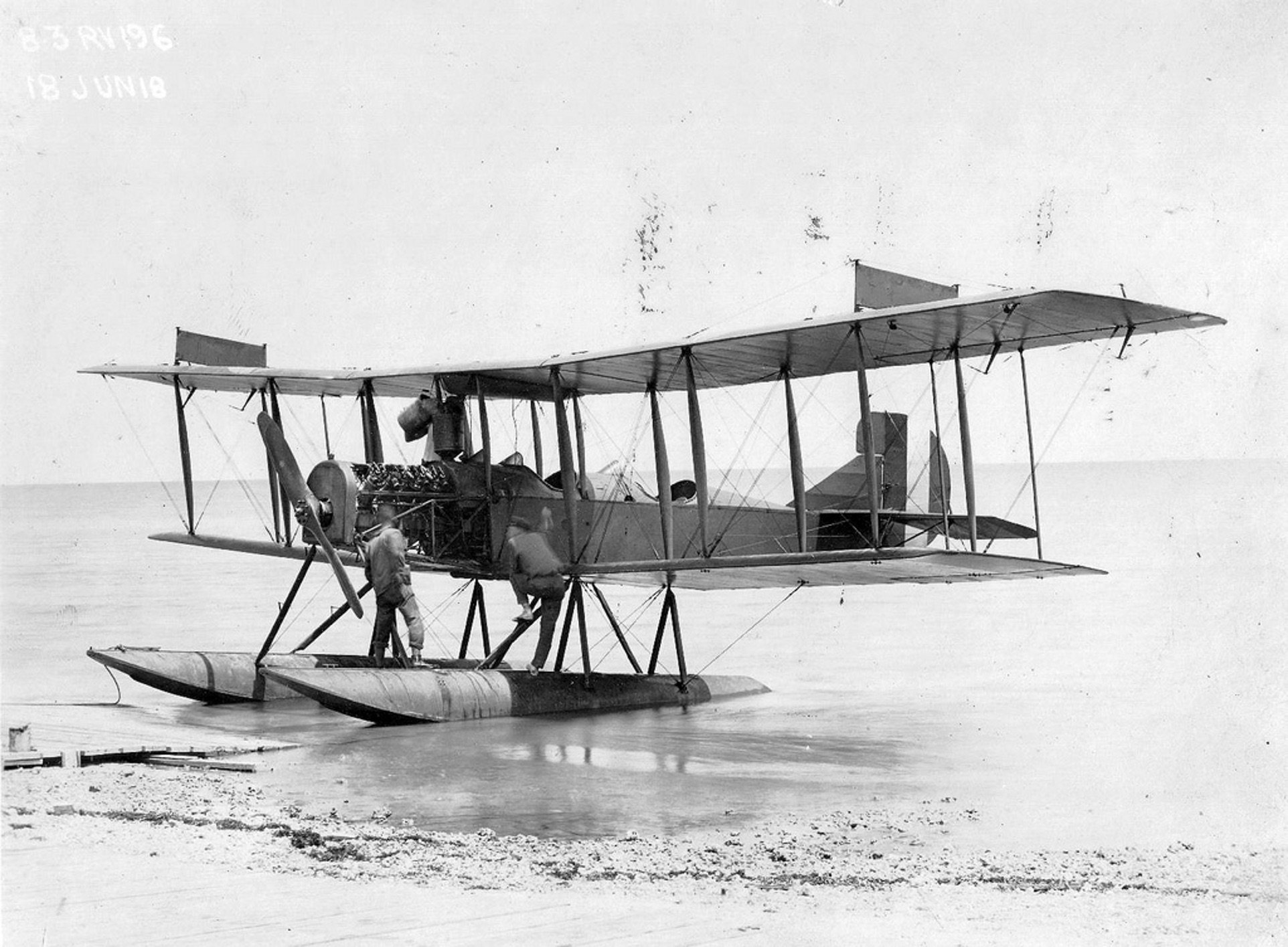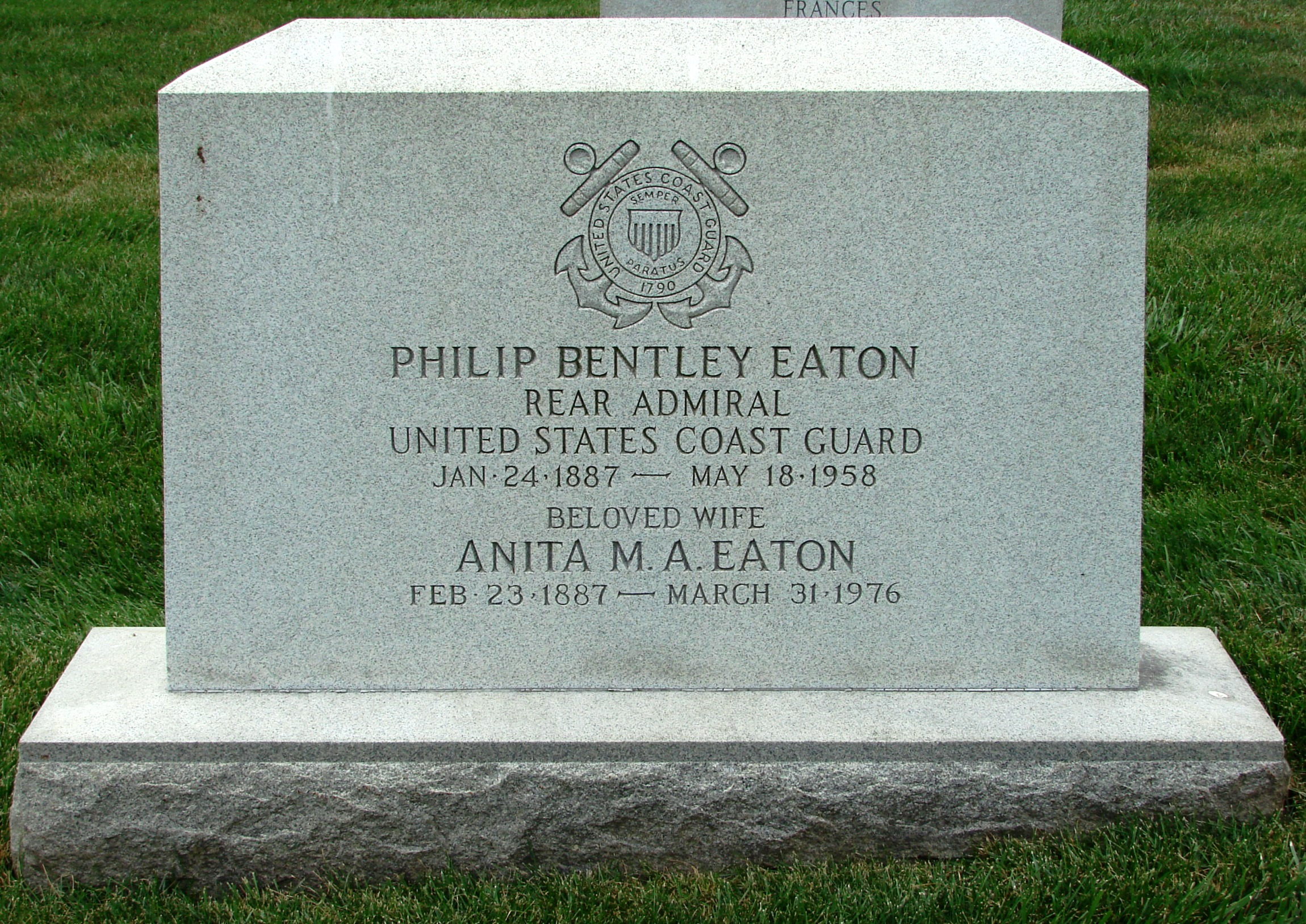The first German submarine operations in U.S. waters took place not in World War II, but during World War I. With responsibility to protect the coasts, the U.S. Coast Guard had several encounters with these early U-boat attacks, including those of U-156. Armed with 18 torpedoes, four deck guns and a supply of underwater mines, U-156 began her deadly campaign against East Coast shipping in June 1918. During this cruise, she sank nearly 35 vessels including the armored cruiser USS San Diego, which struck one of her mines on July 19th.
The Coast Guard and its aviators played a vital role in the World War I war effort. In 1916, Congress authorized the Coast Guard to develop an aviation branch, including aircraft, air stations and pilots. That same year, Coast Guard officers began to train at the Navy’s Pensacola Naval Flight School. Lieutenant Philip Bentley Eaton was one of those officers.
Eaton’s early passion had focused on engineering and technology. He matriculated from the prestigious Webb Academy of Naval Architecture in New York. After graduating from Webb in 1907, Eaton received an appointment as a cadet engineer in the Revenue Cutter Service School of Instruction and graduated with the class of 1908. Over the next six years, he saw service on board cutters stationed in Baltimore, New York, Milwaukee, New London, San Juan, and Port Townsend (Washington). In 1915, Eaton was assigned to the famed Coast Guard cutter Bear and served on her for two years before departing in 1917 for flight training at Pensacola.

On April 6, 1917, the U.S. declared war on Germany and the Coast Guard was transferred from the Treasury Department to the U.S. Navy. After earning his wings as a naval aviator in October, the Navy assigned Eaton as executive officer of Naval Air Station Montauk (Long Island) and, eight months later, he received command of Naval Air Station Chatham on Cape Cod. Chatham supported two dirigibles and seven seaplanes with a complement of 245 officers and men. After two weeks on the job, Eaton received a field promotion, rising from second lieutenant to captain of engineers, equivalent to the Navy’s rank of lieutenant commander.
Late in the morning on Sunday, July 21, 1918, U-156 emerged from the hazy waters of Cape Cod to prey on American coastal shipping. She located the towboat Perth Amboy and four wooden barges lined up in a towline. Rather than waste precious torpedoes on the slow-moving Perth Amboy and her consorts, U-156’s commander ordered his crew to shell the vessel and her barges with the sub’s deck guns. Some of the long shots landed on Nauset Beach, the first foreign cannon fire to hit U.S. shores since the War of 1812 and the only enemy shells to hit American soil during World War I.
Though he served as commanding officer of Chatham, Eaton still flew regular patrols. Two days before the U-156 attack, one of the air station’s dirigibles had broken its anchor mechanism and drifted away from the station. By the morning of the 21st, the lighter-than-air craft had still not been found, so Eaton took off early in one of the station’s R-9 floatplanes to search for it. Other aircraft from the base were also searching for the missing dirigible.

In Eaton’s absence, the acting commanding officer had heard the distinctive sound of the sub’s guns firing on the barges; and he dispatched one of the base’s HS-1 seaplanes with a payload of two Mark IV bombs. The HS-1 dropped its bombs close enough to sink the U-156, but the bombs’ fuse mechanisms failed to detonate on impact. They were duds and some officials later claimed the fuses may have been tampered with by German saboteurs.
When he returned from his patrol later that morning, Eaton was informed of the U-boat attack in progress. He took on a payload of one Mark IV bomb underneath his R-9 biplane. Within ten minutes of landing, he had returned to the air flying a beeline at the surfaced U-boat. The skies were hazy and smoke rising from the burning vessels obscured Eaton’s aircraft from the sub’s lookouts. In addition, the distraction from the earlier HS-1 still circling overhead and Eaton’s low-level approach took the U-boat’s gunners by surprise.
The sub’s gun crew finally saw Eaton closing and began firing on him. Eaton dodged the enemy fire and bore down on the target while the Germans scrambled for the hatches to prepare to dive. Witnessing the attack from his cockpit, the pilot of the HS-1 later reported, “Right through the smoke of the wreck, over the lifeboats and all, here came Captain Eaton’s plane, flying straight for the submarine, and flying low. He saw [the U-boat’s] high-angle gun flashing, too, but he came ahead.”
Eaton made his approach unscathed and dropped his bomb at an altitude of 500 feet. The bomb struck the water near the U-boat, but it also proved a dud just like the ones dropped by the HS-1. Eaton later stated, “Had the bomb functioned, the submarine would have literally been smashed.” Eaton made a second pass over the sub still running on the surface, but with nothing left to drop, he reached for a wrench located in the cockpit and threw it at the enemy vessel. Witnessing this desperate effort, the U-boat commander realized he had little to fear from the circling aircraft With the Perth Amboy in flames and the barges destroyed, the U-boat submerged and departed the scene of North America’s first air-sea battle.
This first fight between U.S. naval aviation and the German menace in U.S. waters proved significant in several ways. Even though the bombs were duds, Eaton’s aim proved accurate and the presence of Eaton’s aircraft likely hastened U-156’s departure from the scene. While the four barges were lost, the tug was recovered, and no American lives were lost. And a Coast Guard aviator played a vital role in the first air-sea battle in home waters.
Eaton’s wartime aviation assignments would be his last. After the war, he returned to sea duty and marine engineering assignments at a time when maritime technology transitioned from wood and sails to steam and steel. Another of Eaton’s career highlights occurred in 1942 when he rescued survivors from the fiery wreck of a B & O Railroad passenger train earning him the Navy & Marine Corps Medal.

After a 30-year career, Phillip Eaton retired as a rear admiral in 1946. He died in 1958 and was laid to rest in Arlington National Cemetery. He was one of thousands of Coast Guard aviators who have made their mark as members of the service’s long blue line.
-USCG-